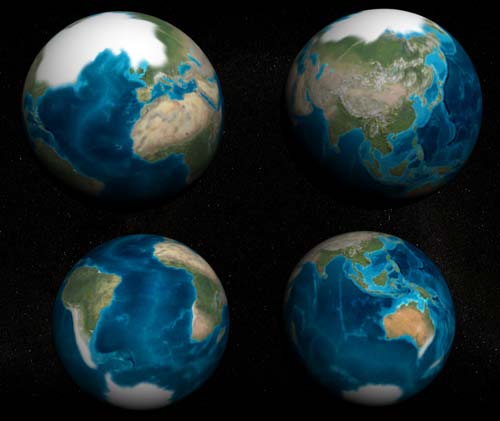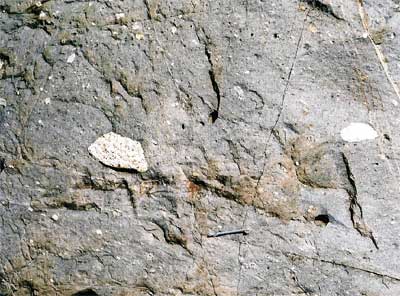Glacial change
There are alpine glaciers high up in the mountains all over the world. Some mountain ranges have enough ice to form extensive ice fields. There are ice caps in Iceland and huge ice sheets in Greenland and Antarctica.
Thousands of years ago the world looked very different. Alpine glaciers flowed out of the mountains and ice sheets covered large portions of North America and Europe. We can figure out how big the glaciers were by looking at the landforms and sediments  they left behind.
they left behind.
Glaciers have expanded and receded many times in the distant past. Many geologists believe that during the Neoproterozoic (about 650 million years ago) most of the earth was covered with ice. This is called the snowball earth theory. There were also large continental ice sheets during the Paleoproterozoic (about 2.5 billion years ago). Glacial deposits from this time period have been found in Huronian Supergroup rocks  in Ontario, Canada. The deposits have been turned into solid rock.
in Ontario, Canada. The deposits have been turned into solid rock.
« Back 












